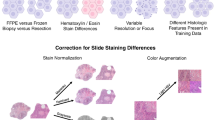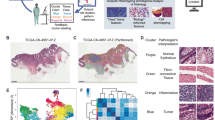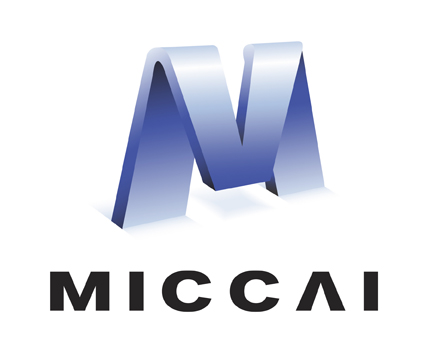Abstract
Deploying deep learning-based imaging tools across various clinical sites poses significant challenges due to inherent domain shifts and regulatory hurdles associated with site-specific fine-tuning. For histopathology, stain normalization techniques can mitigate discrepancies, but they often fall short of eliminating inter-site variations. Therefore, we present Data Alchemy, an explainable stain normalization method combined with test time data calibration via a template learning framework to overcome barriers in cross-site analysis. Data Alchemy handles shifts inherent to multi-site data and minimizes them without needing to change the weights of the normalization or classifier networks. Our approach extends to unseen sites in various clinical settings where data domain discrepancies are unknown. Extensive experiments highlight the efficacy of our framework in tumor classification in hematoxylin and eosin-stained patches. Our explainable normalization method boosts classification tasks’ area under the precision-recall curve (AUPR) by 0.165, 0.545 to 0.710. Additionally, Data Alchemy further reduces the multisite classification domain gap, by improving the 0.710 AUPR an additional 0.142, elevating classification performance further to 0.852, from 0.545. Our Data Alchemy framework can popularize precision medicine with minimal operational overhead by allowing for the seamless integration of pre-trained deep learning-based clinical tools across multiple sites.
Access this chapter
Tax calculation will be finalised at checkout
Purchases are for personal use only
Similar content being viewed by others
References
Anaya-Isaza, A., Mera-Jiménez, L., Zequera-Diaz, M.: An overview of deep learning in medical imaging. Inform. Med. Unlock. 26, 100723 (2021)
Bejnordi, B.E., et al.: Diagnostic assessment of deep learning algorithms for detection of lymph node metastases in women with breast cancer. JAMA 318(22), 2199–2210 (2017)
Cheng, J.Y., Abel, J.T., Balis, U.G., McClintock, D.S., Pantanowitz, L.: Challenges in the development, deployment, and regulation of artificial intelligence in anatomic pathology. Am. J. Pathol. 191(10), 1684–1692 (2021)
Center for devices and radiological health, US FDA, artificial intelligence and machine learning (AI/ml)-enabled medical device, December 2023. https://www.fda.gov/medical-devices/software-medical-device-samd/artificial-intelligence-and-machine-learning-aiml-enabled-medical-devices
Gatys, L.A., Ecker, A.S., Bethge, M.: Image style transfer using convolutional neural networks. In: 2016 IEEE Conference on Computer Vision and Pattern Recognition (CVPR), pp. 2414–2423 (2016). https://doi.org/10.1109/CVPR.2016.265
Haub, P., Meckel, T.: A model based survey of colour deconvolution in diagnostic brightfield microscopy: error estimation and spectral consideration. Sci. Rep. 5, 12096 (2015). https://doi.org/10.1038/srep12096
He, M., Li, Z., Liu, C., Shi, D., Tan, Z.: Deployment of artificial intelligence in real-world practice: opportunity and challenge. Asia-Pacific J. Ophthalmol. 9(4), 299–307 (2020)
Hoque, M.Z., Keskinarkaus, A., Nyberg, P., Seppänen, T.: Stain normalization methods for histopathology image analysis: a comprehensive review and experimental comparison. Inf. Fusion 102, 101997 (2024). https://doi.org/10.1016/j.inffus.2023.101997
Hossain, M.: Whitening and coloring transformations for multivariate Gaussian data. In: A Selecture Partly Based on the ECE662 Spring (2014)
Kang, H., et al.: Stainnet: a fast and robust stain normalization network. Front. Med. 8 (2021). https://doi.org/10.3389/fmed.2021.746307
Kanopoulos, N., Vasanthavada, N., Baker, R.: Design of an image edge detection filter using the sobel operator. IEEE J. Solid-State Circuits 23(2), 358–367 (1988). https://doi.org/10.1109/4.996
Laves, M.H., Ihler, S., Fast, J.F., Kahrs, L.A., Ortmaier, T.: Well-calibrated regression uncertainty in medical imaging with deep learning. In: Medical Imaging with Deep Learning, pp. 393–412. PMLR (2020)
Li, Y., Ping, W.: Cancer metastasis detection with neural conditional random field. In: Medical Imaging with Deep Learning (2018)
Li, Y., Fang, C., Yang, J., Wang, Z., Lu, X., Yang, M.H.: Universal style transfer via feature transforms. Adv. Neural Inf. Process. Syst. 30 (2017)
Macenko, M., et al.: A method for normalizing histology slides for quantitative analysis. In: 2009 IEEE International Symposium on Biomedical Imaging: From Nano to Macro, pp. 1107–1110 (2009). https://doi.org/10.1109/ISBI.2009.5193250
Parida, A., Jiang, Z., Packer, R.J., Avery, R.A., Anwar, S.M., Linguraru, M.G.: Quantitative metrics for benchmarking medical image harmonization. In: 2024 IEEE International Symposium on Biomedical Imaging (ISBI), pp. 1–5 (2024). https://doi.org/10.1109/ISBI56570.2024.10635289
Rabinovich, A., Agarwal, S., Laris, C., Price, J., Belongie, S.: Unsupervised color decomposition of histologically stained tissue samples. In: Thrun, S., Saul, L., Schölkopf, B. (eds.) Advances in Neural Information Processing Systems, vol. 16. MIT Press (2003)
Rajaraman, S., Ganesan, P., Antani, S.: Deep learning model calibration for improving performance in class-imbalanced medical image classification tasks. PLoS ONE 17(1), e0262838 (2022)
Reinhard, E., Adhikhmin, M., Gooch, B., Shirley, P.: Color transfer between images. IEEE Comput. Graphics Appl. 21(5), 34–41 (2001). https://doi.org/10.1109/38.946629
Runz, M., Rusche, D., Schmidt, S., Weihrauch, M., Hesser, J., Weis, C.A.: Normalization of he-stained histological images using cycle consistent generative adversarial networks. Diagnost. Pathol. 16, 71 (2021). https://doi.org/10.1186/s13000-021-01126-y
Sahiner, B., et al.: Deep learning in medical imaging and radiation therapy. Med. Phys. 46(1), e1–e36 (2019)
Salvi, M., Acharya, U.R., Molinari, F., Meiburger, K.M.: The impact of pre- and post-image processing techniques on deep learning frameworks: a comprehensive review for digital pathology image analysis. Comput. Biol. Med. 128, 104129 (2021)
Salvi, M., et al.: Impact of stain normalization on pathologist assessment of prostate cancer: a comparative study. Cancers 15(5), 1503 (2023). https://doi.org/10.3390/cancers15051503
Setiadi, D.R.I.M.: PSNR vs SSIM: imperceptibility quality assessment for image steganography. Multimedia Tools Appl. 80(6), 8423–8444 (2021)
Shaban, M.T., Baur, C., Navab, N., Albarqouni, S.: Staingan: stain style transfer for digital histological images. In: 2019 IEEE 16th International Symposium on Biomedical Imaging (ISBI 2019), pp. 953–956. IEEE (2019)
Simonyan, K., Zisserman, A.: Very deep convolutional networks for large-scale image recognition. arXiv preprint arXiv:1409.1556 (2014)
Tellez, D., et al.: Quantifying the effects of data augmentation and stain color normalization in convolutional neural networks for computational pathology. Med. Image Anal. 58, 101544 (2019). https://api.semanticscholar.org/CorpusID:62841444
Voon, W., et al.: Evaluating the effectiveness of stain normalization techniques in automated grading of invasive ductal carcinoma histopathological images. Sci. Reports 13, 20518 (2023).https://doi.org/10.1038/s41598-023-46619-6
Wagner, S.J., et al.: Structure-preserving multi-domain stain color augmentation using style-transfer with disentangled representations. In: de Bruijne, M., et al. (eds.) MICCAI 2021. LNCS, vol. 12908, pp. 257–266. Springer, Cham (2021). https://doi.org/10.1007/978-3-030-87237-3_25
Zheng, Y., et al.: Histopathological whole slide image analysis using context-based CBIR. IEEE Trans. Med. Imaging 37(7), 1641–1652 (2018). https://doi.org/10.1109/TMI.2018.2796130
Acknowledgements
This work was supported by the National Cancer Institute award UG3CA236536.
Author information
Authors and Affiliations
Corresponding author
Editor information
Editors and Affiliations
1 Electronic supplementary material
Below is the link to the electronic supplementary material.
Rights and permissions
Copyright information
© 2025 The Author(s), under exclusive license to Springer Nature Switzerland AG
About this paper
Cite this paper
Parida, A. et al. (2025). Data Alchemy: Mitigating Cross-Site Model Variability Through Test Time Data Calibration. In: Xu, X., Cui, Z., Rekik, I., Ouyang, X., Sun, K. (eds) Machine Learning in Medical Imaging. MLMI 2024. Lecture Notes in Computer Science, vol 15242. Springer, Cham. https://doi.org/10.1007/978-3-031-73290-4_15
Download citation
DOI: https://doi.org/10.1007/978-3-031-73290-4_15
Published:
Publisher Name: Springer, Cham
Print ISBN: 978-3-031-73292-8
Online ISBN: 978-3-031-73290-4
eBook Packages: Computer ScienceComputer Science (R0)





